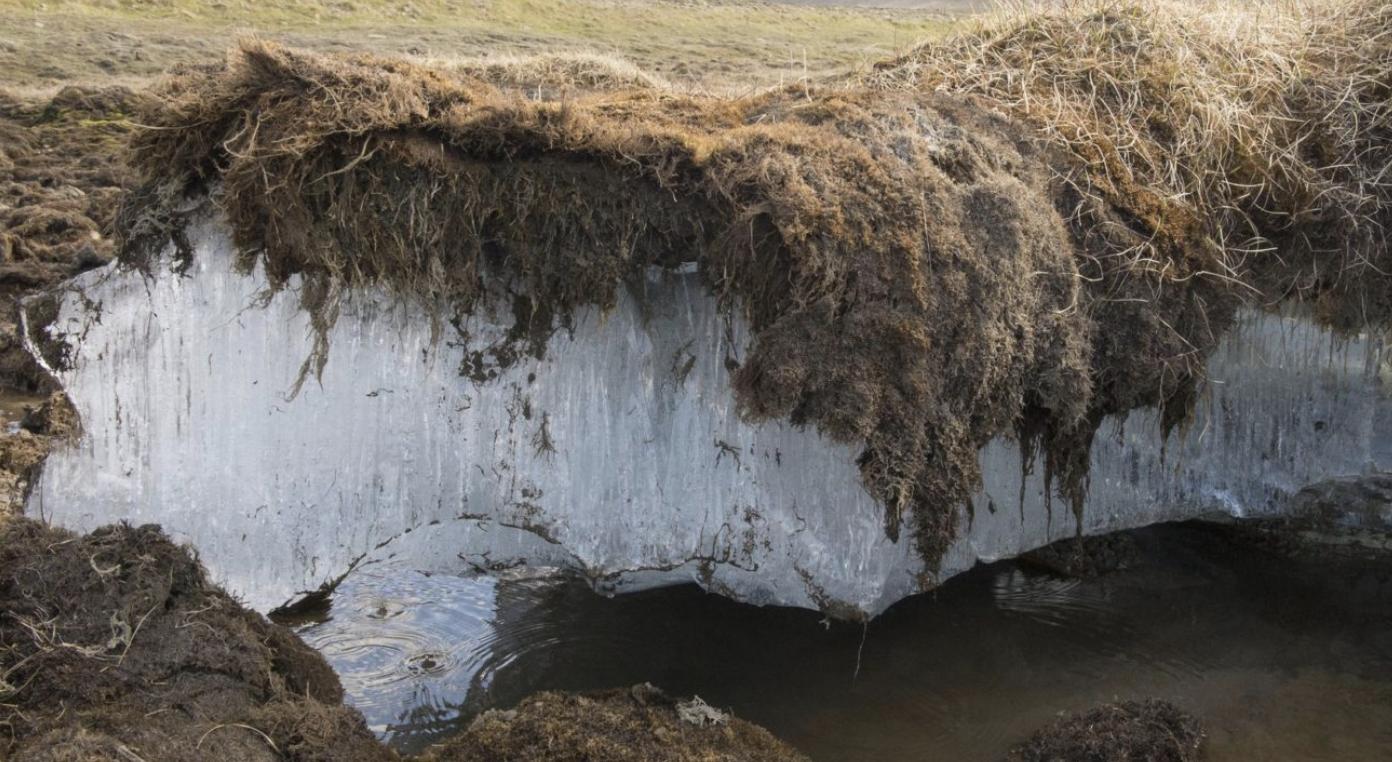
31 interesting facts about Permafrost
- 👁️ 256
Permafrost, a layer of permanently frozen ground found in polar regions and high mountains, is a fascinating and crucial component of the Earth’s cryosphere. It covers vast areas of the Northern Hemisphere, holding secrets of ancient climates and ecosystems within its icy grasp. The existence of permafrost influences not only the global climate but also the infrastructure and livelihoods of people living in these cold environments. As the planet warms, the thawing of permafrost poses significant challenges and releases greenhouse gases, making its study and understanding increasingly important. Here are 31 interesting and informative facts about permafrost that highlight its characteristics, significance, and the impacts of its changes.
- Permafrost is soil, rock, or sediment that has been frozen for at least two consecutive years.
- It covers approximately 15% of the Earth’s land surface.
- The thickness of permafrost can range from less than a meter to over 1,500 meters.
- Permafrost is most commonly found in the Northern Hemisphere, in regions like Siberia, Alaska, and Canada.
- Temperatures within permafrost can be as low as -70°C (-94°F) in Siberia.
- The active layer is the top layer of soil above the permafrost that thaws during the summer and freezes again in the winter.
- Permafrost contains large quantities of organic carbon, estimated to be twice the amount currently in the atmosphere.
- When permafrost thaws, it releases methane and carbon dioxide, potent greenhouse gases.
- The oldest permafrost on Earth is found in Siberia, with some areas estimated to be over 1 million years old.
- Structures built on permafrost, such as houses and pipelines, are at risk of damage as the ground thaws and settles.
- Permafrost acts as a natural storage facility, preserving ancient animal remains and human artifacts.
- The melting of permafrost can lead to the formation of thermokarst lakes, which occur when ice-rich permafrost thaws and the ground collapses.
- Permafrost regions are home to unique ecosystems, including cold-adapted plants and animals.
- The study of permafrost helps scientists understand past climate conditions through ice cores and frozen organic material.
- About 35 million people, roughly 0.5% of the global population, live in the permafrost zone.
- Permafrost thawing can release ancient viruses and bacteria that have been trapped in the ice for thousands of years.
- The Global Terrestrial Network for Permafrost monitors permafrost temperatures and changes worldwide.
- Climate models predict significant permafrost thawing by 2100, which could release up to 240 billion tons of carbon.
- Permafrost contains frozen peatlands that, when thawed, can accelerate the release of carbon dioxide.
- Ice wedges, a common feature in permafrost, form when the ground contracts in the winter, creating cracks that fill with water and freeze.
- Pingo is a dome-shaped hill formed over a core of ice, commonly found in permafrost areas.
- The Qinghai-Tibet Plateau in China contains the largest area of high-altitude permafrost outside the polar regions.
- Permafrost degradation can lead to changes in local hydrology, affecting water quality and availability.
- The term “permafrost” was first used in 1943 by Siemon W. Muller.
- Cryoturbation refers to the mixing of materials from various layers within permafrost due to freeze-thaw cycles.
- The circumpolar active layer monitoring network tracks the thickness of the active layer overlying permafrost.
- Black carbon deposits from wildfires and fossil fuel combustion can darken the surface of snow and ice, increasing solar absorption and accelerating thawing.
- Tundra, the ecosystem found in permafrost regions, is characterized by low temperatures, short growing seasons, and limited drainage.
- Certain bacteria and microorganisms can survive and remain active in permafrost at subzero temperatures.
- The Arctic Circle is experiencing the fastest warming on Earth, which significantly impacts permafrost thawing rates.
- Permafrost thawing can cause landslides and other geohazards, posing risks to human safety and infrastructure.
Permafrost is a critical yet vulnerable component of our planet’s climate system. Its study reveals not only the past climates and ecosystems preserved within but also underscores the urgent need to address the challenges posed by its thawing. As global temperatures rise, understanding and mitigating the impacts of permafrost thaw become increasingly important for protecting the Arctic environment, its inhabitants, and the global climate. The changing state of permafrost reminds us of the interconnectedness of Earth’s systems and the importance of taking action to preserve our planet’s health.
Permafrost, a layer of permanently frozen ground found in polar regions and high mountains, is a fascinating and crucial component of the Earth’s cryosphere. It covers vast areas of the Northern Hemisphere, holding secrets of ancient climates and ecosystems within its icy grasp. The existence of permafrost influences not only…